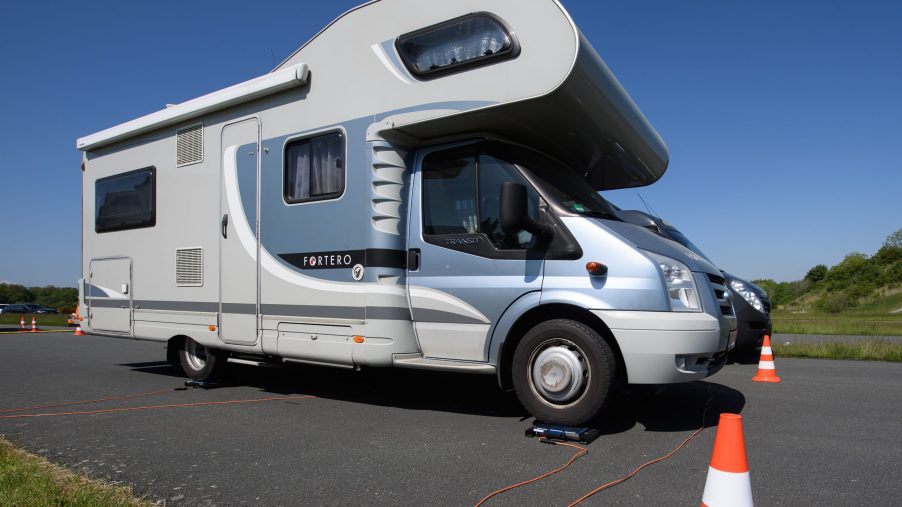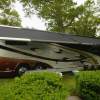
Never Do This While Driving Your RV
RVs are loved for their iconic shape and convenience for camping. The bulky vehicles enable drivers to take a mini-home on the road, often including amenities like beds, kitchenettes, and bathrooms. Often viewed as a “home on wheels,” RVs make many feel that they can live their everyday lives while embarking on a cross-country trip.
As a rule, most RVs aim to have their features safe and usable while driving (whether or not their use is legal is another question). However, there are a few key exceptions to be aware of before you make your next trip.
RVs allow for comfortable, convenient driving
According to Smithsonian Magazine, we have the Conklin family to thank for the modern-day recreational vehicle. In 1915, the wealthy family “modified a bus into a fully furnished, double-deck motorhome” to bring an extra level of sophistication and comfort to their travels. As they drove the rudimentary RV cross-country, they drew plenty of media attention and began to redefine what camping could look like.
RVs, soon more widely and quickly produced, played into the culture of the early 1900s. Many consumers — in an effort to reject the rapid modernization they saw all around them — desired to return to nature for their leisure and vacations. Of course, they still expected comfort and, funnily enough, modernity.
These modified vans and camping vehicles took much of the uncertainty out of nature-based retreats. Modern versions of the vehicle include such amenities as bathrooms, stoves, couches, televisions, and comfortable beds.
Slide outs should not be used when the vehicle is in motion
Despite their bulk and home-y take on a motor vehicle, RVs are undeniably still compact. Over the years, manufacturers have gotten more and more clever about addressing this space issue — from innovative, stow-away storage to slide-outs.
A slide-out is a portion of the RV that can extend beyond the body. It essentially functions as a hidden room that, when expanded, can drastically increase the roominess of your interior. While most modern RVs have at least one slide out, luxurious vehicles often advertise multiple, larger versions.
During long road trips, it’s natural to want a little extra breathing room. Unfortunately, Camper Report advises that slide-outs should never be used while driving, under any circumstances. The exterior extension can impact the aerodynamics of your vehicle. It also drastically widens the body and will potentially leave your vehicle hanging into other lanes.
Finally — and perhaps most importantly — it’s crucial to note that slide-outs were are not built to withstand the winds that accompany driving speeds. Operating your RV with the slide-outs engaged puts your vehicle and passengers at risk.
It’s wisest to not use amenities while driving
Camper Report breaks down the other common RV amenities, and which are safe to use while the vehicle is in motion. Some fan-favorite features, like the microwave and stove, are generally safe to use. However, just because you can do something doesn’t necessarily mean that you should. Each state has its own laws regarding seatbelt use in RVs. As you would expect, those who are standing and moving about the RV are at much greater risk of injury should an accident occur.
Of course, we won’t blame you if you opt to use your RV’s bathroom, as opposed to a gas station’s. Still, to keep your vacation as safe and as legal as possible, it’s wise to hold off on your other RV benefits until you’ve reached your destination.


